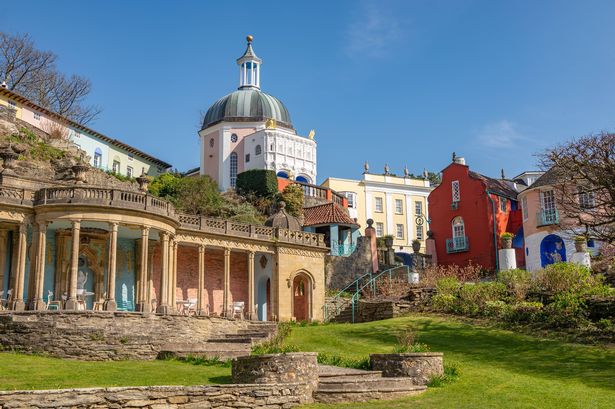The seaside village has been named one of the most colourful places in the world – and it’s easy to see why
A beautiful seaside village is so vibrant and colourful that it may give its residents and visitors a little pick-me-up.
As the nights draw in and daylight hours begin to feel particularly precious, it’s important to do what you can to keep the mood cheery. Taking vitamin D supplements or using a lamp are techniques some opt for to beat the glooming of the seasons.
According to Karen Haller, who works in the field of applied colour psychology, there is another way travellers can perk up their mood. She argues that being in bright, colourful places gives a subconscious mood boost.
“There’s something about stepping into a place full of colour that instantly lifts you. It changes how you feel, how you move through the space, and even how you connect with others. That’s why colour-filled destinations are becoming more popular. We’re drawn to them not just because they look good, but because they leave us feeling better. Happier. More open. More alive. It’s something I do myself, seeking out places where colour isn’t just seen, it’s felt. And those are the experiences that stay with you,” Karen said.
Do you have a travel story to tell? Email webtravel@reachplc.com
Working with Staysure, a medical travel insurance provider, Karen helped select a ranking of 26 global destinations that offer high levels of colour saturation, vibrancy and hue variation. Ranking highly is the Welsh seaside village of Portmeirion. The Gwynedd folly town turned 100 last year and has been charming locals and visitors alike ever since Sir Clough Williams-Ellis laid the first brick of the baroque masterpiece.
Portmeirion’s location on the Irish Sea in the North West of Wales means it’s not somewhere you’d immediately think would be good for banishing the winter blues. However, the village’s cobbled-together collection of 96 buildings, including cottages, a clock tower, a hotel, and a town hall, is splashed with an array of bright colours and scattered across the hillside in an undeniably cheery manner.
Sir Clough admitted he had taken inspiration for Portmeirion from the Italian town of Portofino. Walking around the town, particularly when the sun is shining, does leave you feeling like you’ve slipped through a Welsh portal and appeared in the Mediterranean. Portmeirion’s roots lie in the Aber Iâ estate, where the ruined Castell Deudraeth was recorded as early as 1188. Victorian tenants later planted exotic trees, and by the time Sir Clough acquired the land, it had become, in his words, a “neglected wilderness”.
He renamed it Portmeirion – ‘Port’ for the coastal location and ‘Meirion’ after the historic county of Merioneth. Construction took place in two stages: the first from 1926 to 1939, and the second from 1954 to 1976. Another charming feature of Portmeirion is that it’s made up of bits of old buildings. The town hall is capped with a roof once belonging to an old country house, bought at auction for £13.
For those who fancy stopping off at Portmeirion for a little winter mood boost, it’s important to know that a charitable trust runs the town and opens it to visitors between 9.30am and 5.30pm. The nearest train station to Portmeirion is Minffordd, which is about a one-mile walk from the village. The walk takes approximately 15 minutes. Minffordd Station is on the Cambrian line, served by Transport for Wales connecting Shrewsbury to Pwllheli and Aberystwyth.
